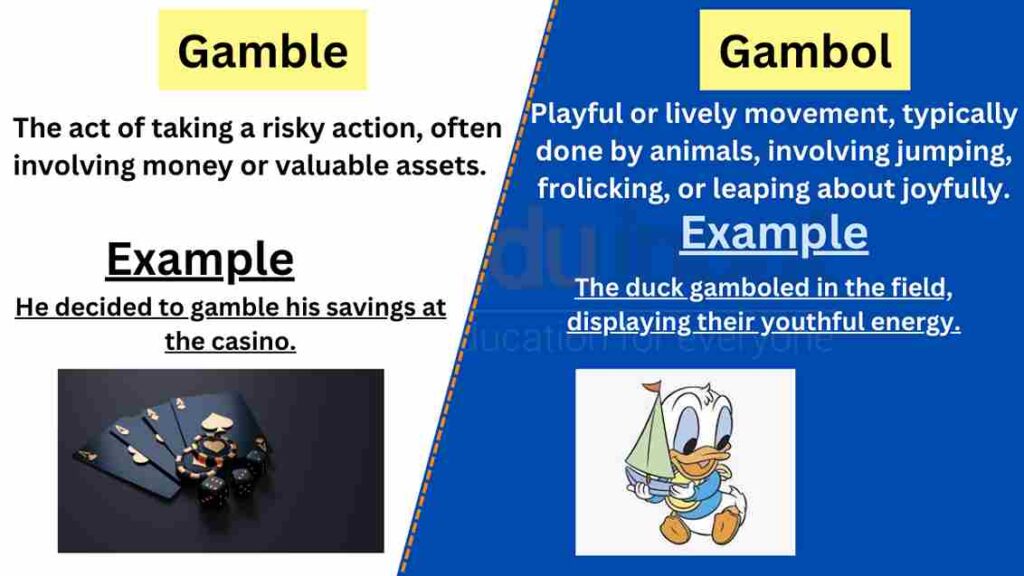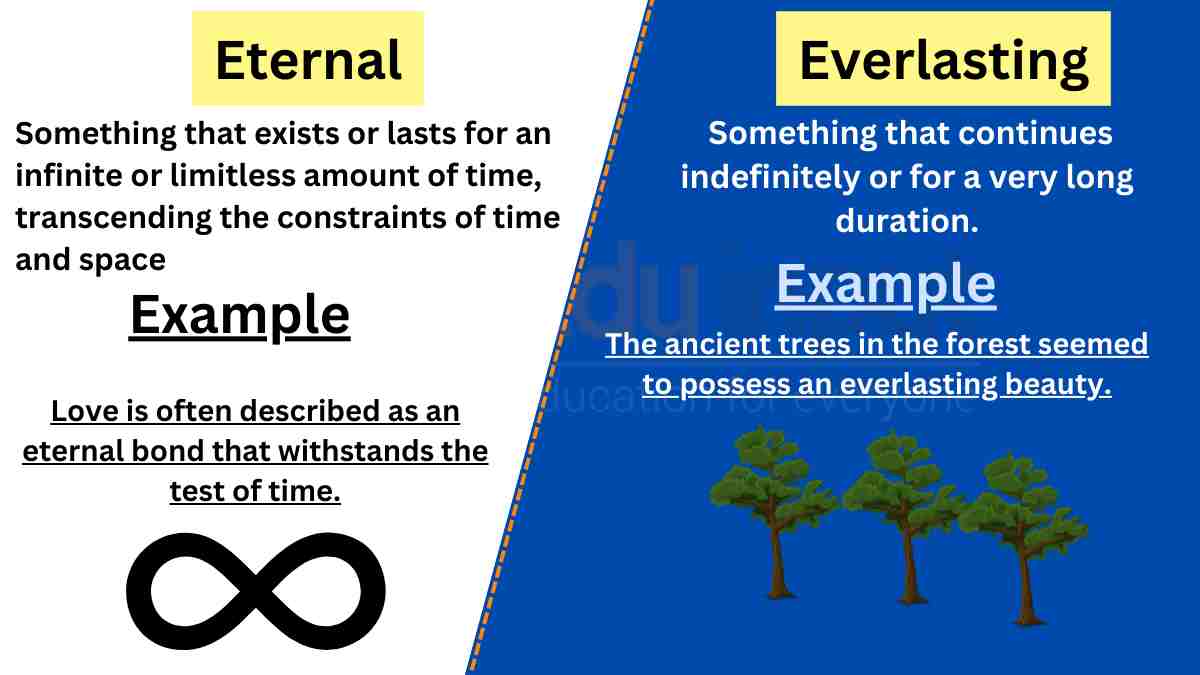Gamble vs Gambol-Difference Between And Examples
In the English language, the words “gamble” and “gambol” may sound similar, but they have distinct meanings and usage. In this article, we will explore the differences between “gamble” and “gambol” to clarify their definitions and contexts. By understanding these terms, we can communicate more accurately and avoid confusion. Let’s dive into the nuances of “gamble” and “gambol” to enhance our language skills.

Meanings and Examples
Gamble Meaning
The meaning of “Gamble” refers to the act of taking a risky action, often involving money or valuable assets, in the hope of gaining a desired outcome, usually associated with chance or uncertainty.
Gamble Examples
- “He decided to gamble his savings at the casino.”
- “Some people enjoy the thrill of gambling on sports events.”
- “She took a gamble by investing in the stock market.”
Gambol Meaning
The meaning of “Gambol” refers to playful or lively movement, typically done by animals, involving jumping, frolicking, or leaping about joyfully.
Gambol Examples
- “The lambs gamboled in the field, displaying their youthful energy.”
- “Children often love to gambol around the playground, chasing each other and laughing.”
- “The puppies excitedly gambolled in the grass, wagging their tails with delight.”
Difference Between Gamble and Gambol
| Gamble | Gambol | |
| Meaning | Act of taking a risky action for desired outcome | Playful or lively movement involving jumping and frolicking |
| Example | “He decided to gamble his savings at the casino.” | “The lambs gamboled in the field, displaying their youthful energy.” |
| Usage | Describing risky actions or activities involving chance | Depicting playful movement or behavior |
| Context | Engaging in games of chance or speculative ventures | Observing animals or children at play |
Usage in a Paragraph
As the group gathered at the casino, some individuals were ready to gamble their money, hoping for a stroke of luck at the blackjack table or roulette wheel. The excitement in the air was palpable as bets were placed, and anticipation filled the room. Each player weighed the risks and rewards, fully aware of the unpredictable nature of gambling.
In a nearby park, children laughed and played, engaging in a spirited gambol among the trees and meadows. Their carefree movements, full of joy and exuberance, brought smiles to the faces of onlookers. Their playful gambols showcased the innocence and vitality of youth, reminding everyone of the simple pleasures of life.
Understanding the distinction between “gamble” and “gambol” is essential for clear communication. “Gamble” refers to taking a risky action, often associated with chance and uncertainty, while “gambol” describes the lively and playful movement, typically observed in animals or children.
By recognizing these differences, we can accurately discuss activities involving risk and chance or describe joyful and animated movements. So, whether you’re considering a gamble or witnessing a lively gambol, understanding the nuances of “gamble” and “gambol” will enhance your language skills and ensure effective communication.






Leave a Reply